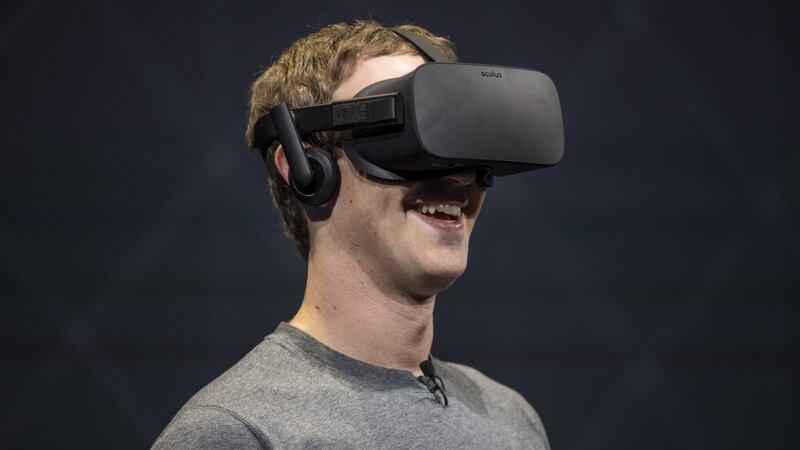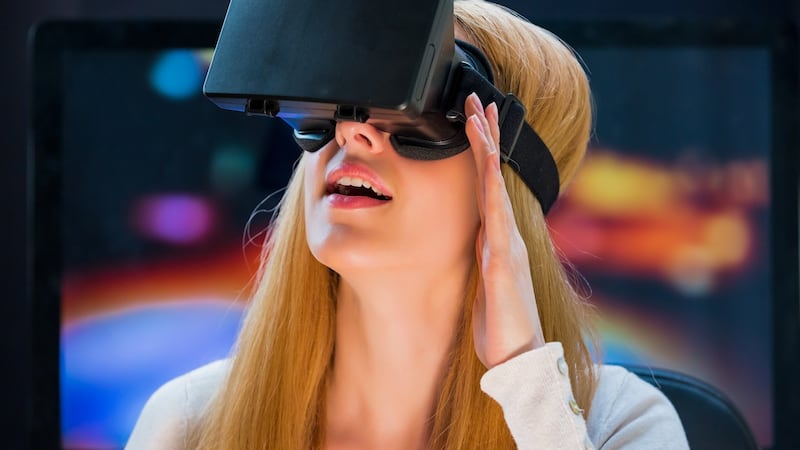Comfortably cocooned inside a rocky red cave on a far-flung planet, I examine my new self. I have smooth brown knees, and ... hang on a mo’ – I’m a black woman with tiny feet? Hmm. Seems so. Oh, and I’m in an astral hair salon presided over by an afro-female divinity. Outlook is rosy with a chance of dreadlocks. Always wanted dreads. Hey, would you look at those? I tell you, it’s a whole different woman!
Thanks, Hyphen-Labs, and the helmet I’m wearing – an “Oculus Rift”, wildly wired with electrodes to stimulate brainwaves and wildly expensive! I was immersed in a new body, life, and planet, encircled by diffused light. Surveying this environment is as mind-expanding as you’d hope. This exceptionally trippy idea was created by four women of colour – Ashley Baccus-Clark and her collaborator Carmen Aguilar y Wedge, together with architect and engineer Nitzi Bartov, and Ece Tankal, to create a vibrant Afrofuturist world in which women of colour lead progress in science and art.
Baccus-Clark said that meeting micro-aggressions all young women of colour know was why she envisioned the project. “They don’t necessarily know science and art are fields they can see themselves in.”
Plus, the members of Hyphen-Labs wanted to create the experience for others. It’s all in a fantasy-rich virtual reality performance called “Neurospeculative Afro-Feminism”, using art with tech.
This is the springtime of this art form, just as the 1900s were the springtime of silent films
Ashley sports a head of dreads framing a laser-sharp brain that is equally “left” and “right”. She met Carmen Aguilar y Wedge at the University of California at Santa Cruz – a seaside campus famous for its idyllic setting and fusion of art with tech. Fittingly, the two – one black, one brown – bonded over a shared printer cable, and became inseparable. (Full disclosure: Carmen, part Mexican-Cuban and all San Franciscan, is my neighbour.)
Now they’ve combined in experimental virtual reality adventures. “This is the springtime of this art form, just as the 1900s were the springtime of silent films,” says Ashley. So VR’s wide open right now. “But the bar is set very high,” adds Carmen.

Equipment is expensive, much more than film. Credit cards melted, and loans lifted. Intel stepped in to back Hyphen-Labs, and they headlined at Sundance Festival and Austin’s South By Southwest Festival.
Both places showcase VR, and draw the world’s VR nuts to don their $800-plus Oculus Rifts helmets (Facebook-owned) or cheaper Daydream (Google) to geek out.
The wiring is pure mad-scientist Frankenstein territory, and Carmen describes Daydream as “like a pillow on your face.”
We want to use it for narratives and no, we don't want to it to become exploited commercially
But all this geeking out will soon become second nature to us, since a $15 cardboard version of VR helmets is already on sale for your own VR immersion experiences. So far the “but what is it actually for?” question remains only half answered.
Ashley and Carmen are firm about their aims to use it as a tool for enlightenment. “We want to use it for narratives and no, we don’t want to it to become exploited commercially,” says Ashley, stressing that content from wider sources is desirable.
At the recent “Gray Area” conference they met Indian VR imagineers who use it for spiritual transitions. A trippy Asian entry altered humans for future needs – it gave babies gills for swimming.
The New York Times has already used VR for features on Fallujah. Archaeologists are recreating Palmyra's destroyed treasures with it. Alzheimer's patients star in projects that aim to arouse empathy. Surgery performed by robots has worked in VR.

But gaming is the most successful use so far.
What’s that you say, porn movies? Well, they’ve been tried but using your imagination is cheaper and easier.
VR pioneers
And a future where kids in history lessons return to revolutionary France to meet Monsieur Guillotin is imminent.
Myself, I’d like to use it in archaeology sites to watch Vikings carving antlers.
But still the big question mark: how VR pioneers can exploit this new artform? “We compare it to how people thought of cinema a century ago,” says Ashley.
Storytelling is what Ashley and fellow imagineers are drawn to all creative ventures. “Like film a century ago, in the springtime of the film industry, when people were starting to figure it out.”
Exactly a century ago, Chaplin was making his first Little Tramp silent movie near where I write, at Niles Essanay Studio. So VR is wide, wide open now, in the same way that Homer found things to sing? “The bar’s still too high,” sighs Carmen. Well, so the form’s amazing, I said.
But what’s the future of content? I don’t know. But we soon will.









